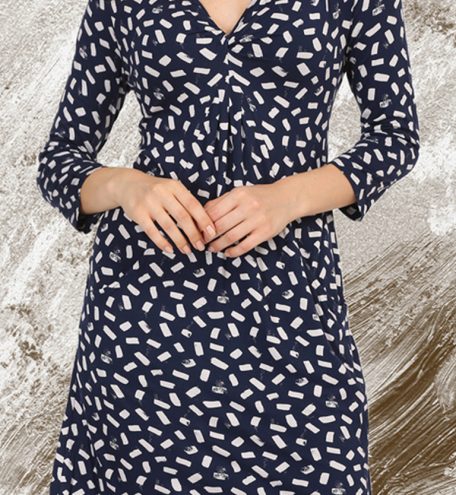No products in the cart.: ₹0.00
The evolution of women’s jacket fashion is a captivating journey that spans centuries, reflecting not only the ever-changing landscape of style but also the evolving roles and empowerment of women throughout history. From functional outerwear to iconic fashion statements, women’s jackets have transformed into versatile pieces that effortlessly blend form and function.
Early Beginnings: The roots of women’s jacket fashion can be traced back to the early 19th century when jackets were primarily functional and modest. During this period, women wore fitted bodices with matching skirts, often accompanied by short bolero-style jackets. These jackets, usually made of heavy fabrics like wool or silk, served practical purposes in keeping women warm while still adhering to the fashion norms of the time.
The Victorian Era: As the Victorian era unfolded, women’s fashion became more elaborate, and jackets took on new forms. Corsets and bustles were popular, influencing the silhouette of jackets. Tailored jackets with intricate detailing, such as embroidery and lace, became a symbol of status and refinement. The emergence of equestrian sports also contributed to the popularity of riding jackets, emphasizing both form and function.
The Roaring Twenties: The 1920s marked a significant shift in women’s fashion, and jackets became more liberating. The flapper style, characterized by loose-fitting and knee-length garments, introduced the iconic “flapper jacket.” These jackets were often adorned with fringe, beads, and sequins, reflecting the carefree and rebellious spirit of the Jazz Age.
World War II and Utility: During World War II, women’s roles in society changed dramatically, and so did their fashion. Utility and practicality took center stage, leading to the creation of military-inspired jackets for women. These jackets, with functional pockets and sturdy designs, reflected the resilience and adaptability of women during wartime.
The Post-War Era: After the war, women’s jacket fashion experienced a revival with the introduction of the “New Look” by Christian Dior in the late 1940s. This era brought back a more feminine silhouette, with tailored jackets featuring nipped waists and structured shoulders. The popularity of iconic figures like Audrey Hepburn further influenced the prominence of stylish jackets in women’s wardrobes.
The Swinging Sixties: The 1960s ushered in a new era of rebellion and experimentation in fashion. Women’s jackets became more diverse, with the emergence of bold prints, psychedelic patterns, and unconventional materials. The mod style, characterized by boxy jackets and bold colors, became a symbol of the youth-driven cultural revolution.
The Power Suit of the ’80s: The 1980s saw the rise of power dressing, and women embraced the structured power suit. Shoulder pads, oversized blazers, and bold colors defined the fashion landscape. The corporate world became a runway for women’s jackets, with influential figures like Margaret Thatcher and Princess Diana setting the tone for power dressing.
Contemporary Trends: In the 21st century, women’s jacket fashion has become more eclectic and inclusive. Designers experiment with various styles, blending traditional elements with contemporary trends. Bomber jackets, leather jackets, denim jackets, and trench coats are just a few examples of the diverse options available to women today. The emphasis on individuality and personal expression has allowed women to choose jackets that align with their unique styles and preferences.
The evolution of women’s jacket fashion is a testament to the dynamic nature of style and the evolving roles of women in society. From functional outerwear to powerful fashion statements, jackets have transcended their utilitarian origins to become iconic pieces that reflect the spirit of their time. As we continue into the future, the ever-changing landscape of women’s jacket fashion promises to bring forth new styles that capture the essence of contemporary culture and individuality.



